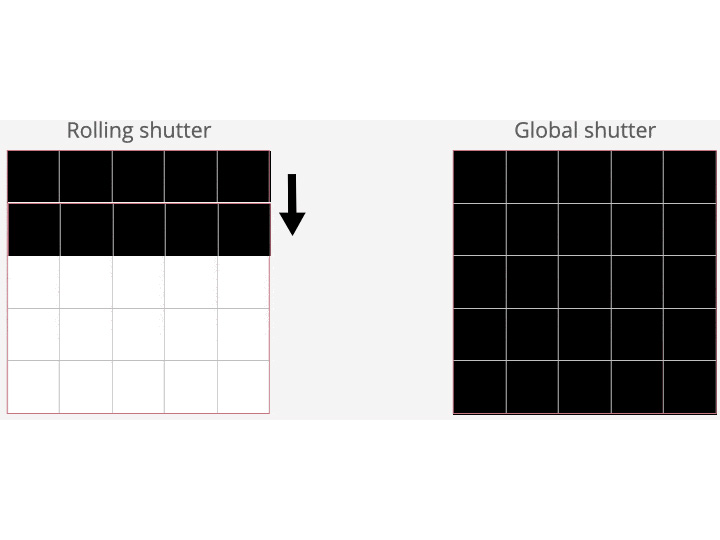Rolling Shutter and Global Shutter are two common types of image sensor shutters.
–Rolling Shutter
In sensors that use a rolling shutter, the image is scanned line by line, which means that each row of pixels in the sensor is exposed to light at a different point in time.
This is similar to the process of opening a rolling curtain, hence the name “rolling shutter”. The pixels in the upper part are exposed first, followed by the middle part, and finally the lower part.
This progressive scanning means that different parts of the image are exposed to light at different points in time.
Advantages: Rolling shutter designs are generally simpler and less expensive due to progressive scanning.
They work well for most still images and slow motion scenes.
Disadvantages: For fast-moving objects, rolling shutter may produce image distortion, especially when the objects in the scene move quickly, the image may appear “jello effect” or “rolling shutter effect”.
Because the exposure time of different parts is not completely synchronized, fast-moving objects may appear deformed in the image.
–Global Shutter
In a global shutter sensor, all pixels are exposed at the same instant, capturing light at the same moment for the entire image. This ensures that every part of the image receives light at the same exact moment, avoiding the time delay of a rolling shutter.
Advantages: For fast-moving objects or high-speed scenes, the global shutter avoids the distortion caused by the rolling shutter, ensuring a clear, distortion-free image. The global shutter can handle extremely fast movements, such as shooting fast-moving athletes or rapidly rotating objects, without the “jello effect”.
Disadvantages: The technology is more complex to implement, usually requiring higher costs and more complex hardware design. In some cases, sensors with global shutter may produce more noise, especially in low-light environments.
In summary, rolling shutter is widely used in common applications and has low cost, but there is distortion when capturing fast-moving objects; global shutter can overcome this problem and is suitable for scenes that require high-precision and high-speed image capture, but it has high cost and complexity.

